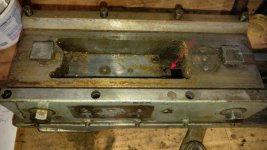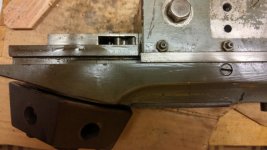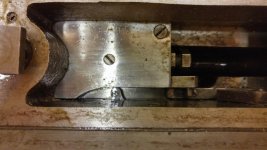Jefflevine
Plastic
- Joined
- Mar 25, 2016
Hello All - first post here, so if I am posting to wrong forum or otherwise breaching protocol, please bear with me/let me know. Happy to be here!
I recently bought a sad rusty Cataract bench lathe (old style with the two rounded bases) and a turret (again old style, with the hexagonal shape).
Through assiduous lubrication and cleaning, I have the turret sliding and turning easily. The problem is that at the end of the handle's backstroke, the plunger does not snap forward on its own, but I need to turn the turret manually a tiny amount (1/16"?) to get the plunger to engage. The turret is turning the right amount with each stroke, accompanied by the turning of the stop rod barrel at the rear of the turret - it is just that the plunger is not snapping back into the underside of the turret at the end of the backstroke.
Can anyone either:
1. tell me what is going on, or
2. tell me what the right sequence is to remove the turret to see what the issue is? I removed a semi-split nut from the top of the turret spindle, and that threaded spindle moves up and down a little independently of the turret, but the turret is not lifting off.
Thanks,
Jeff
I recently bought a sad rusty Cataract bench lathe (old style with the two rounded bases) and a turret (again old style, with the hexagonal shape).
Through assiduous lubrication and cleaning, I have the turret sliding and turning easily. The problem is that at the end of the handle's backstroke, the plunger does not snap forward on its own, but I need to turn the turret manually a tiny amount (1/16"?) to get the plunger to engage. The turret is turning the right amount with each stroke, accompanied by the turning of the stop rod barrel at the rear of the turret - it is just that the plunger is not snapping back into the underside of the turret at the end of the backstroke.
Can anyone either:
1. tell me what is going on, or
2. tell me what the right sequence is to remove the turret to see what the issue is? I removed a semi-split nut from the top of the turret spindle, and that threaded spindle moves up and down a little independently of the turret, but the turret is not lifting off.
Thanks,
Jeff













 so appreciate getting a look-see
so appreciate getting a look-see